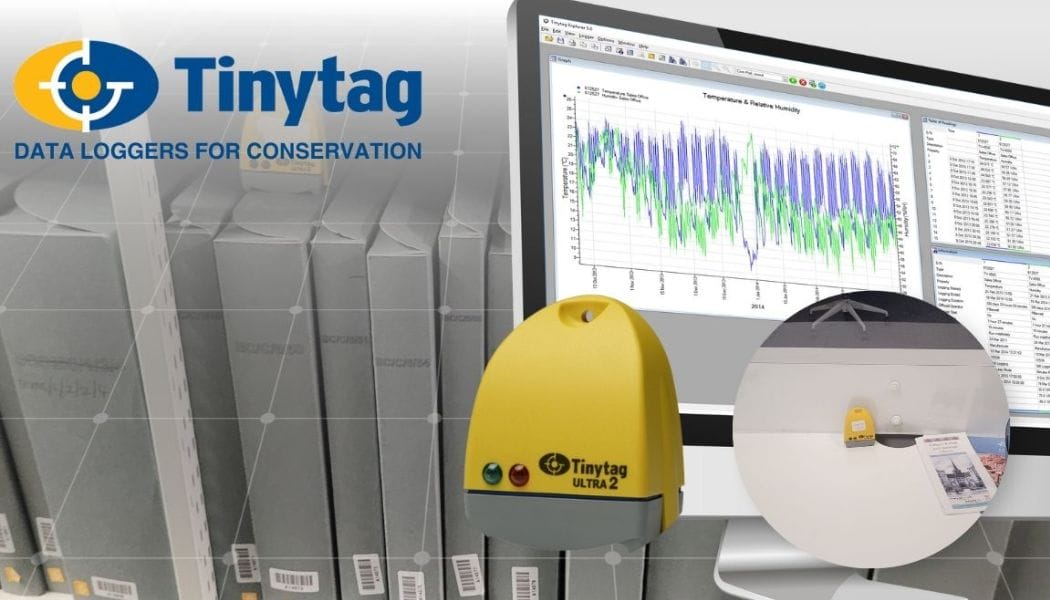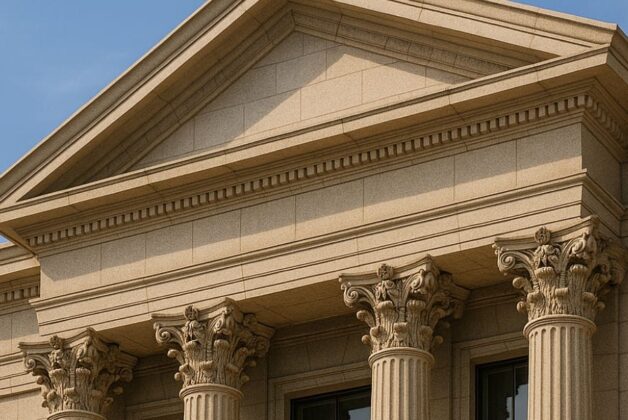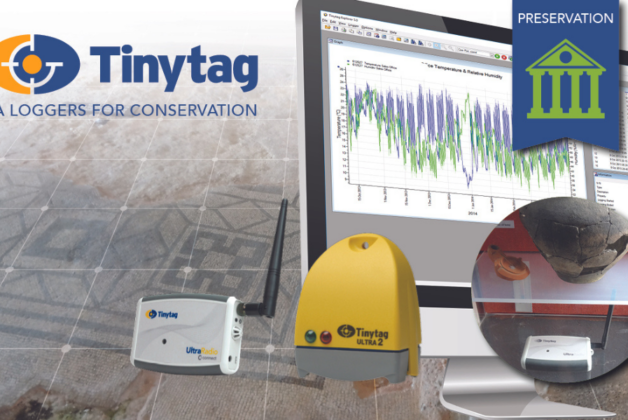The Glamorgan Archives use Tinytags to monitor the environmental conditions in archive strongrooms, the studio, the search room, and in isolation to aid the conservation of historical documents and artefacts.
Glamorgan Archives hold the archives for the counties of South Wales, including the preserved counties of Mid and South Glamorgan. The Vale of Glamorgan Council is grouped with five other local authorities: Cardiff Council, Rhondda Cynon Taf County Borough Council, Merthyr Tydfil County Borough Council, Bridgend County Borough Council and (partially) Caerphilly County Borough Council.
The Glamorgan Archives is a purpose-built building with a building maintenance system installed, including air conditioning and heating. It is important for environmental monitoring to take place to ensure the building conditions meet the BS 4971:2017 Conservation and care of archive and library collections standards, as well as analysing packaging and minimising damage to artefacts. Damage to documents and other sensitive objects can be caused by abnormally high or low temperatures, and low or high humidity, in particular.
Lydia Stirling, the Conservator at Glamorgan Archives, uses 14 Tinytag Ultra 2 (TGU-4500) temperature and humidity data loggers in the five strongrooms, the studio, the search room, and in isolation. The isolation room is designed for any objects that come into the archives which are damp/mouldy/infested or otherwise unsuitable for display, where they are placed in freezers to dry out the artefacts and kill off germs, mould and bugs.
The data from the data loggers is checked every 1-3 months and helps to prove the conditions that the archive materials are kept in, providing evidence that conditions comply with BS 4971:2017 regulations in order to qualify for and secure future grant funding. Lydia is familiar with Tinytags having worked with them before, and finds the Tinytag Explorer software “nice and easy to use – it is straightforward and concise, and learning how to view and download the data is very intuitive.”
Glamorgan Archives is filled with various parchments, maps, photos and negatives, plans, volumes, paper documents, digital film stock, and more – all aiming to preserve the rich local history. The archives’ oldest object can be traced back to circa 1130. Members of the public can request to see most items from the archive catalogue for free; fees are chargeable for obtaining digital copies of items, for the archivist to research on your behalf, and for other miscellaneous circumstances.
One exciting project that Lydia is currently working on is restoring designs of The Bute’s estate in Cardiff Castle by William Burges in 1865, where the castle was redesigned “to be transformed into a Neo-Gothic dream palace” throughout Burges and Lord Bute’s sixteen-year partnership. The drawings are mostly unusable at the moment, with poor mounting and inaccessibility, so they must be restored before they are entered into the archives.





